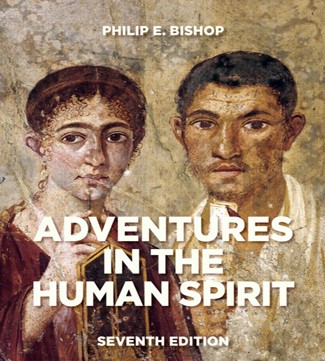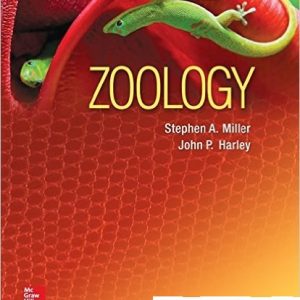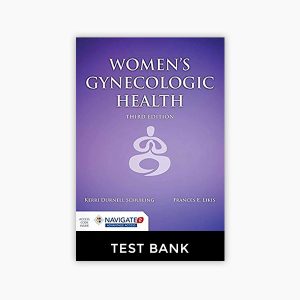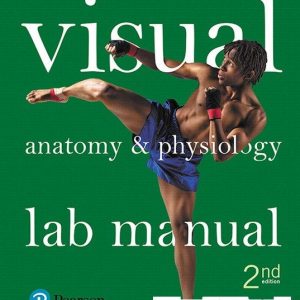Instant download Adventures in the Human Spirit 7th Edition Bishop Test Bank pdf docx epub after payment.

Product Details:
- ISBN-10 : 0205881475
- ISBN-13 : 978-0205881475
- Author: Bishop
A historical survey of the western humanities in a single-volume text.
Adventures in the Human Spirit provides a balanced introduction to the major arts, philosophy, and religion. Appropriate for students with little background in the arts and humanities, this single-volume text approaches the humanities by focusing on principal events, styles, movements, and figures. The seventh edition engages students with new chapter-opening spreads, a refreshed color palette, and a clear pedagogical structure. New author Margaret Manos maintains the late Philip E. Bishop’s approachability to understanding western humanities, bringing the past to life. The new edition continues to contain Bishop’s coverage of music, religion, literature, philosophy, and science.
MULTIPLE-CHOICE
1. The term megalith is properly applied to what work of the ancient world?
a. tomb of Nefertari
b. Stonehenge
c. pyramids at Giza
d. Woman from Willendorf
Answer: b
Page ref: 32
2. In which of these would one expect to encounter a depiction of the exploits of Gilgamesh?
a. painted inside an Egyptian tomb
b. carved on a megalithic structure
c. decorating a Shang dynasty bronze bell
d. described in a Mesopotamian epic
Answer: d
Page ref: 35
3. What term or topic would be most relevant to a discussion of monumental architecture in the ancient world?
a. the caves of Lascaux
b. Vedic hymns
c. hieroglyph
d. ziggurat
Answer: d
Page ref: 35
4. In which of these civilizations or sites would one expect to find a mythic tiger carved of precious jade?
a. Shang
b. Babylon
c. Lascaux
d. Amarna
Answer: a
Page ref: 41
5. Which statement best describes the bull’s head lyre found in an ancient Sumerian site?
a. constructed of gold and lapis lazuli
b. buried in a royal tomb with its owner
c. inscribed with royal laws and decrees
d. shaped of fired clay and painted in red
Answer: a
Page ref: 33
6. At which of these sites did archaeologists find ancient and remarkable prehistoric cave paintings?
a. Ur-Nammu and Persepolis
b. Stonehenge and Göbekli Tepe
c. Lascaux and Chauvet
d. Karnak and Luxor
Answer: c
Page ref: 25
7. The carved figures of Mycerinus and His Queen, which probably stood along a long causeway, were created by what ancient civilization?
a. Olmec
b. Old Babylonian
c. Indus Valley
d. Egyptian
Answer: d
Page ref: 37
8. Hammurabi’s Code would be most relevant to a discussion of what topic in the development of ancient civilization?
a. the transmission of secret knowledge or “mysteries”
b. the sculptural representation of the human form
c. the development of ancient legal systems
d. the worship of an ancient Mother Goddess
Answer: c
Page ref: 35
9. What ancient Near Eastern ruler revived the power of the city of Babylon and rebuilt it in grand fashion with an imposing gate and a multi-layered ziggurat?
a. Nebuchadnezzar
b. Cyrus
c. Ramses II
d. Hammurabi
Answer: a
Page ref: 35
10. What would one expect to find on a ritual wine vessel (a fang-yi) of the Shang dynasty, China?
a. cuneiform writing
b. a taotie decoration
c. an epic myth of Marduk
d. the face of Agamemnon
Answer: b
Page ref: 41
11. The prayers and hymns of the Vedas were the creation of what ancient civilization?
a. Indian
b. Andean
c. Egyptian
d. Persian
Answer: a
Page ref: 40
12. The great cities of Mohenjo-Daro and Harappa were discovered in what ancient region or empire?
a. along the banks of the Nile
b. the Persian empire
c. on the island of Crete
d. in the Indus Valley
Answer: d
Page ref: 39
13. Where would the figures of Isis and Osiris most likely be found?
a. guarding the body of a Zhou ruler
b. inscribed on a column in Old Babylon
c. painted on the tomb of the Egyptian queen Nefertari
d. at the foot of a Sumerian ziggurat
Answer: c
Page ref: 38
14. Which of these structures is associated with the singular rule of Akhenaten, the unorthodox Egyptian pharaoh?
a. Stonehenge
b. caves of Lascaux
c. ziggurat of Ur-Nammu
d. temple of Amarna
Answer: d
Page ref: 38-39
15. Which of these structures functioned as an elaborate tomb for god-like rulers?
a. pyramid at Giza
b. Stonehenge
c. ziggurat of Ur-Nammu
d. Great Bath of Mohenjo-Daro
Answer: a
Page ref: 37
16. What ancient sacred text contains an account of the mythic battle between Marduk and Tiamat, gods of the ancient Sumerians and Babylonians?
a. Vedas
b. Enuma elish
c. Hymn to Aten
d. Epic of Gilgamesh
Answer: b
Page ref: 34
17. The Sumerians were the first people of the ancient world to accomplish which of the following?
a. achieve naturalism in life-size sculpture
b. conquer the Greek city-states
c. develop forms of writing
d. construct bronze weapons
Answer: c
Page ref: 32
18. What characterized ancient Egyptian mythology?
a. a focus on dominant earth- and mother-goddesses
b. an elaborate interest in life after death
c. the belief in a single, all-powerful father god
d. gods with human traits of weakness and vanity
Answer: b
Page ref: 37
19. Ancient Indian civilization of South Asia was most noted for which of these works?
a. the Epic of Gilgamesh
b. Hammurabi’s Code
c. the Vedas and Upanishads
d. stepped ziggurats
Answer: c
Page ref: 40
20. Which statement describes the principal artistic achievement of the Mesoamerican Olmec civilization?
a. lavishly decorated royal tombs
b. large columned temples for ritual sacrifice
c. naturalistic sculptures of the human figure in motion
d. colossal helmeted heads carved in stone
Answer: d
Page ref: 42
21. What term or topic would be most relevant to a discussion of the earliest American civilizations?
a. the cave paintings of Lascaux
b. the Vedas and Upanishads
c. the court of Akhenaten
d. the cultivation of maize and cotton
Answer: d
Page ref: 42
22. What geographic feature provided the center of early human cultures in the South American continent?
a. the Andes range of mountains
b. the Mesopotamian plain
c. the great river valley of the Amazon
d. limestone caves and caverns
Answer: a
Page ref: 42
23. The first great cities of the ancient world arose in what region?
a. Mesopotamia
b. Yellow River valley
c. Nile River valley
d. central Europe
Answer: a
Page ref: 32
24. What statement best describes the Persian kingdom established by the rulers Cyrus II and Darius, who built a capital at Persepolis?
a. memorialized its rulers with gigantic stone heads
b. undertook the construction of monumental pyramids
c. created the last and greatest empire of the ancient Near East
d. fostered a rich religious heritage of sacred texts
Answer: c
Page ref: 35
25. What topic or term would be most useful in discussing the epic tale of Gilgamesh, whose heroic life culminates in a search for immortality?
a. cuneiform
b. polytheism
c. megalith
d. sacred kingship
Answer: d
Page ref: 35
26. What statement best describes the significance of the ancient site of Göbekli Tepe, in modern-day Turkey?
a. one of the oldest megalithic shrine yet discovered
b. the capital of a powerful Assyrian king
c. the location of brilliantly painted caves
d. a complex of gigantic pyramidal altars
Answer: a
Page ref: 32
27. What term would be most useful in explaining the period of rapid cultural progress when humans learned to make stone tools, sew clothes, and paint the walls of rock caves?
a. epic
b. Upper Paleolithic
c. archetype
d. cuneiform
Answer: b
Page ref: 26
SHORT-ANSWER
28. Characterize the likely purpose or function of stone-age art.
29. Identify two common religious themes and artistic features in ancient Near Eastern civilizations.
30. Define myth in its function as “sacred history” in the ancient world.
31. Explain the religious purpose or meaning of two works of Egyptian art.
32. Identify three major artistic or philosophical achievements of early Asian civilizations.
33. Identify the principal centers of ancient American civilization.
ESSAY & DISCUSSION
34. Much of ancient religion and mythic belief concerned itself with death and the life beyond death. Illustrate ancient beliefs about death with examples drawn from several different ancient civilizations. Briefly compare these ancient beliefs with beliefs and customs today.
35. In analyzing the artistic achievements of the ancient world, how would you explain the steps or stages of human progress, as measured in works of art, architecture, and literature? In citing several examples from different civilizations, note the stages or phases of this progression and explain the factors that encouraged each new step.
36. Evaluate the images of women in the art of the ancient world. Assess what roles and symbolic significance are attributed to women in these artistic guises, and compare briefly to other artistic or cultural images that you know.





